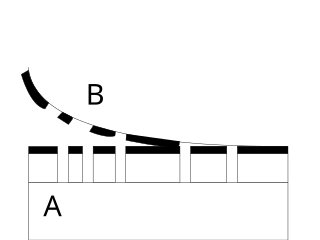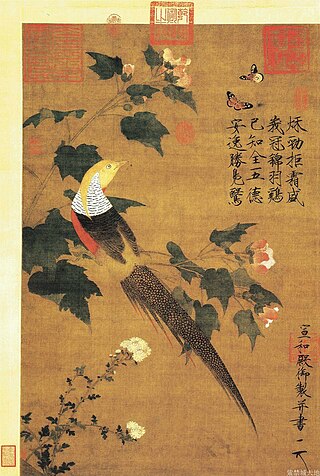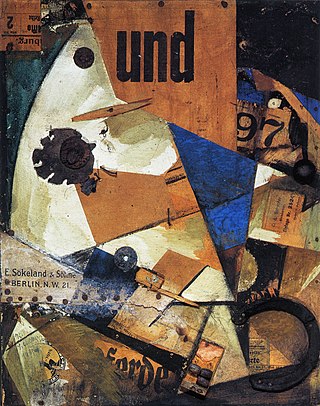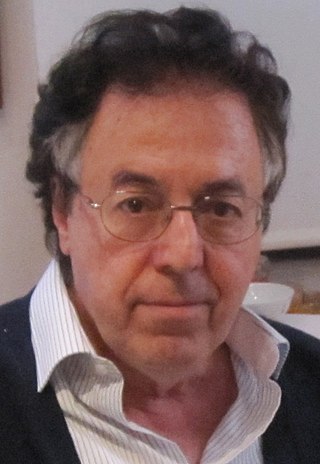
Drawing is a visual art that uses an instrument to mark paper or another two-dimensional surface. The instrument might be pencils, crayons, pens with inks, brushes with paints, or combinations of these, and in more modern times, computer styluses with graphics tablets.

Printmaking is the process of creating artworks by printing, normally on paper, but also on fabric, wood, metal, and other surfaces. "Traditional printmaking" normally covers only the process of creating prints using a hand processed technique, rather than a photographic reproduction of a visual artwork which would be printed using an electronic machine ; however, there is some cross-over between traditional and digital printmaking, including risograph.
Surrealism in art, poetry, and literature uses numerous techniques and games to provide inspiration. Many of these are said to free imagination by producing a creative process free of conscious control. The importance of the unconscious as a source of inspiration is central to the nature of surrealism.

Gouache, body color, or opaque watercolor is a water-medium paint consisting of natural pigment, water, a binding agent, and sometimes additional inert material. Gouache is designed to be opaque. Gouache has a long history, having been used for at least twelve centuries. It is used most consistently by commercial artists for posters, illustrations, comics, and other design work.

A blueprint is a reproduction of a technical drawing or engineering drawing using a contact print process on light-sensitive sheets. Introduced by Sir John Herschel in 1842, the process allowed rapid and accurate production of an unlimited number of copies. It was widely used for over a century for the reproduction of specification drawings used in construction and industry. The blueprint process was characterized by white lines on a blue background, a negative of the original. The process was not able to reproduce color or shades of grey.

Relief printing is a family of printing methods where a printing block, plate or matrix, which has had ink applied to its non-recessed surface, is brought into contact with paper. The non-recessed surface will leave ink on the paper, whereas the recessed areas will not. A printing press may not be needed, as the back of the paper can be rubbed or pressed by hand with a simple tool such as a brayer or roller. In contrast, in intaglio printing, the recessed areas are printed.

Fingerpaint is a kind of paint intended to be applied with the fingers; it typically comes in tubes and is used by small children, though it has occasionally been used by adults either to teach art to children, or for their own use.

In visual art, mixed media describes artwork in which more than one medium or material has been employed. Assemblages, collages, and sculpture are three common examples of art using different media. Materials used to create mixed media art include, but are not limited to, paint, cloth, paper, wood and found objects.
Décollage, in art, is the opposite of collage; instead of an image being built up of all or parts of existing images, it is created by cutting, tearing away or otherwise removing, pieces of an original image. The French word "décollage" translates into English literally as "take-off" or "to become unglued" or "to become unstuck". Examples of décollage include etrécissements and cut-up technique. A similar technique is the lacerated poster, a poster in which one has been placed over another or others, and the top poster or posters have been ripped, revealing to a greater or lesser degree the poster or posters underneath.

Paper craft is a collection of crafts using paper or card as the primary artistic medium for the creation of two or three-dimensional objects. Paper and card stock lend themselves to a wide range of techniques and can be folded, curved, bent, cut, glued, molded, stitched, or layered. Papermaking by hand is also a paper craft.

Gongbi is a careful realist technique in Chinese painting, the opposite of the interpretive and freely expressive xieyi style.
Froissage is a method of collage developed by Czech artist Ladislav Novák in which the lines made by crumpling up a piece of paper are used to create a drawing. One major exponent of the art of froissage is Jiří Kolář.

Scanography, more commonly referred to as scanner photography, is the process of capturing digitized images of objects for the purpose of creating printable art using a flatbed "photo" scanner with a CCD array capturing device. Fine art scanography differs from traditional document scanning by using atypical objects, often three-dimensional, as well as from photography, due to the nature of the scanner's operation.

Book scanning or book digitization is the process of converting physical books and magazines into digital media such as images, electronic text, or electronic books (e-books) by using an image scanner. Large scale book scanning projects have made many books available online.

A facsimile is a copy or reproduction of an old book, manuscript, map, art print, or other item of historical value that is as true to the original source as possible. It differs from other forms of reproduction by attempting to replicate the source as accurately as possible in scale, color, condition, and other material qualities. For books and manuscripts, this also entails a complete copy of all pages; hence, an incomplete copy is a "partial facsimile". Facsimiles are sometimes used by scholars to research a source that they do not have access to otherwise, and by museums and archives for media preservation and conservation. Many are sold commercially, often accompanied by a volume of commentary. They may be produced in limited editions, typically of 500–2,000 copies, and cost the equivalent of a few thousand United States dollars. The term "fax" is a shortened form of "facsimile" though most faxes are not reproductions of the quality expected in a true facsimile.

Collage is a technique of art creation, primarily used in the visual arts, but in music too, by which art results from an assemblage of different forms, thus creating a new whole.
Rapid visualization is a technique used by graphic artists to create a drawing of a concept in several stages. After the completion of thumbnail drawings, a preferred drawing is selected and rendered in full size, usually in pencil. Then a sheet of paper is put over the drawing and it is redrawn/traced with corrections, additions, and alterations. This process is repeated several times, often with color added at some stage, until the image is perfected to the desire of the artist.

Guillem Ramos-Poquí is a painter who was a major figure of Arte Povera and Conceptual art in Catalonia during the 1960s. He has lived in London since 1968.

Multidimensional art is art that cannot be represented on a two-dimensional flat canvas. Artists create a third dimension with paper or another medium. In multidimensional art an artist can make use of virtually any items (mediums).














